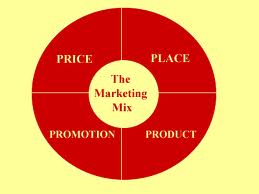
The importance of marketing has increased over the past several decades due to increasing rate of competition caused by globalisation, technological advancement, rising role of internet and other reasons. As a result, marketing has become an important aspect of the business for obtaining competitive advantage and therefore its main theories and principles are finding their wider applications. In other words, the necessity of marketing for businesses is confirmed by the fact that “businesses must sell products to survive and grow, and marketing activities help to sell their products” (Pride and Ferrell, 2008, p.16). This article critically analyses the importance of marketing in relation to the beverage industry in China through employing a range of marketing tools. Specifically the choice of marketing tools used to analyse beverage industry in China consist of marketing mix, PESTEL analysis and Porter’s Five Forces analysis. Marketing Mix Marketing mix can be defined as “a unique blend of product, place, promotion, and pricing strategies designed to produce mutually satisfying exchanges with a target market” (Lamb et al, 2008, p.44). In other words, effective strategies should be designed and implemented regarding all four components associated with a product or service – product, place, promotion, and pricing in order to ensure the sale of the product or service. This approach can be adopted by companies in beverage industry in China in order to ensure the success of the company in global level. A range of strategies are available managers in beverage industry in China can use to gain competitive edge regarding each component of the marketing mix. Product decisions China’s beverage industry managers can take in order to increase their market chare include the brand name of the beverage products, styling and safety of packaging, their expiry date etc. Marketing managers in beverage industry in China have…

Marketing mix is one of the most popular theoretical frameworks in marketing that has been used by companies in order to make marketing and other decisions in a more efficient manner. Companies have concentrated on various elements of marketing mix as a source of competitive edge according to the strategy adopted by senior level management in order to achieve long-term aims and objectives. The potential contribution of marketing in terms of obtaining competitive edge has been realised by management of many successful businesses therefore, the attention to this specific area of business practice has become greater than ever before (Egan, 2007). Accordingly, today most of the concepts associated with marketing such as marketing mix, product life-cycle, PEST and SWOT analysis, Porter’s Five forces, Value-Chain analysis and others attract more interest than ever before and these marketing concepts are finding their practical applications among increasing number of businesses. Marketing mix, otherwise known as 4Ps can be highlighted as one of the fundamental concepts in marketing and focuses on four aspects of the business practice: product, price, promotion and place (Klein, 2007). The practical application of marketing mix by companies varies according to their size, chosen business strategies, geographical location, competitive edge and a range of other factors. According to Kumar (2010), marketing mix is the terms used to describe the combination of methods employed by a business in order o achieve its objectives by marketing its products and services effectively to a specific target group. Bootwala et al (2009) mention the definition of marketing mix as offered by Philip Kotler according to which “marketing mix is a set of controllable variables and their levels that the firm uses to influence the target market” (Bootwala et al, 2009, p.3.1). Evolution of Marketing Mix Kitchen (2010) informs that the theory of marketing…

Marks & Spencer (M&S) is a UK based clothing and luxury food retail company that has been founded in 1884 by Michael Marks and Thomas Spencer. The company has over 76,000 employees in a global level, and deals with over 2000 suppliers (Annual Report and Financial Statement, 2010). “The global influence of the company stretches from Europe to Russia, the Middle East, India and Asia at present – taking advantage of 3 of 4 BRIC nation markets” (Bunston, 2008, p.3). M&S homeware and clothing products account for 49% of its total business, whereas the remaining 51% account for food products. With more than 600 stores throughout the UK, the flagship M&S store is located at London’s Marble Arch and possesses the selling space of around 170,000 square feet (Marks and Spencer Group PLC, 2008, online). From the date it was formed M&S was steadily growing, focusing on the quality of its products and offering value for money. The profitability of the company had peaked in the financial year of 1997/98, shortly after which the company found itself into deep financial troubles. The reasons were the increasing level of profit margin, the refusal of the company to accept credit cards, the principle of the company to deal only with British suppliers etc. Then the company went through massive changes that included the introduction of new ‘Per Una’ ranges of clothing, acceptance of credit cards, more focus on customer services, etc, as a result of which the company was able to recover some of its market share. The company has engaged in a range of Corporate Social Responsibility (CSR) initiatives as well, and ‘Plan A’ initiative can be highlighted separately as the most notable one. The project has been assigned a budget of 200 million GBP and has a range of ambitious objectives to be…

Each business entity operating within the European Union (EU) is bound to operate within the boundaries of legislation issued by the government of the home country of the business, as well as, the rules and regulations of the EU. The Treaty on the Functioning of the European Union (TFEU) “organises the functioning of the Union and determines the areas of, delimitation of, and arrangements for exercising its competences” (TFEU, p.4), this includes economic activities as well, and therefore, has a direct affect on activities of business entities operating within the union. This essay analyses activities that are prohibited by Article 101 of the TFEU and also explores some other related issues. Article 101 “applies to agreements between undertakings and declares these agreements void when they are found to restrict the competition” (Chalmers et al, 2010, p.962). The paper starts with specifying activities that are prohibited by Article 101 followed by explanations for the prohibition of those activities offered by some distinguished European business researchers and practitioners. Moreover, evaluations of efficiency of prohibition enforcements are undertaken taking into account the secondary data findings regarding the issue. Prohibited Activities by TFEU Article 101 A range of certain activities have been prohibited by Article 101 of TFEU in order to promote fair competition within EU. As most of the formal legal texts, TFEU texts have been perfected by professionals in legal industry in order to achieve a high level of clarity, avoid any ambiguity and thus, possible misunderstandings and even manipulations. Nevertheless, TFEU texts, including Article 101 may be not clear for people with no formal legal qualifications, and thus it makes sense to explain the article in great detail before proceeding to discussions about the reasons of prohibition and the efficiency level of its enforcement. The article starts with “The following…
By John Dudovskiy
Category: International Business

The importance and range of international convention, exhibition and meeting industry have increased significantly during the last several decades due to the increasing force of globalisation, technological advancement, increasing role of internet and other reasons. These factors had immense positive impact on the industry in a way that planning and executing conferences, exhibitions and meetings have become significantly easier through getting easy access to relevant knowledge via internet, communicating to various stakeholders efficiently through e-mail and other modern means of communication, as well as using various visual and audio aids enabled by modern technology that increase the efficiency of such occasions. This article is a critical analysis of international convention, exhibition and meeting industry and addresses a range of related issues. The industry is analysed in general while the global focus is held when concentrating on the issues the industry is facing. The article starts with identifying size, value and range of the industry followed by the discussion of the key event factors from different perspectives. Then key issues in internal and external stakeholder management are discussed followed by the analysis of the specific skills required in the management in this industry. Moreover assessment is provided about the role of the destination marketing in conference, exhibition and meeting industry. Conclusion constitutes the summery of the report highlighting important points discussed in the report. Nature and Specifications of International Convention, Exhibition and Meeting Industry There are different variations of classifications of events offered by many authors who had academic or practical credentials to contribute to the topic. One of the most popular versions is the one offered by Pike (2008), who classifies events into six categories which are meetings, incentive travel, convention, exhibition, trade show and public show. Each of them differ from the rest of the group according to their…
By John Dudovskiy
Category: Industry Analysis

The clear advantages of free market economy above centrally planned economy were confirmed with the fall of USSR in 1991. However, free market economies have differences in their variations as well, the main of which are liberal market economy and coordinated market economy. The fundamental differences between liberal and coordinated market economies can be summarised in a way that in liberal market economies hierarchies and competitive market arrangements coordinate the activities of businesses, whereas coordinated market economies mainly focus on non-market relationships in terms of coordination of their activities (Vestergaard, 2009). NewAge-Bio is a biotechnology company that is considering opening a research and development centre abroad and has to choose between the USA, a country with liberal market economy, and Germany a classical coordinated market economy. This article represents a report for NewAge-Bio CEO Mr Mark Phillips and gives advices backed by research and justifications regarding the choice of the country to open a research and development centre. The article starts with general discussions about advantages and disadvantages of liberal and coordinated market economies in cases of USA and Germany and proceeds to focusing on five main aspects of the issue: industrial relations, employee relations, education and training, inter-company relations, corporate governance and financial markets. Moreover, a personal letter is also included to NewAge-Bio CEO Mr Mark Phillips that gives specific recommendations regarding the choice of the country, providing detailed justifications for each of the points being recommended. Advantages and Disadvantages of Liberal and Coordinated Market Economies for Opening NewAge-Bio Research and Development Centre: USA or Germany? Liberal and coordinated market economies are the two forms of free market economies that have specific differences which would have direct impact on various aspects of practice of NewAge-Bio Research and Development Centre. The basis for the distinction between liberal and coordinated market…

Globalisation along with other factors like technological advancement and increasing role of internet has changed the ways businesses are conducted dramatically and irreversibly. Nowadays, any company with an innovative product or service, right price and effective marketing strategy has an opportunity to lead its market globally employing hundreds of thousands employees and generating annual revenues to be counted in tens of billions of pounds. This is possible because today “no country or group can shut itself off from others” (Beck, 2000, p.10) in terms of their economic activities in general, and export to the country in particular. However, implementing the same approach in various markets in terms of pricing, marketing, packaging and other aspects of the product may not work well due to cultural and other differences associated with each particular market. This article is a critical analysis of the approach of “Think Globally, Act Locally” and analyses the need for multinational companies to adapt to the characteristics of each individual market they are operating in. The paper starts with the discussion regarding the importance of the approach “Think Globally, Act Locally” followed by the analyses of application of this concept by some of the famous multinational companies. Then, difficulties associated with the need for multinational businesses to adapt to local markets are explained in great detail referring to the works of international businesses researchers and practitioners. Lastly, recommendations are also provided within the paper regarding how multinational companies already operating in multiple markets, as well as companies trading locally, but with the expansions plans on a global level can achieve successful operations across borders and continents through to their local markets, thus effectively attracting local customers. The Importance of “Think Globally, Act Locally” Approach The primary reasons of globalisation have to be reminded briefly in order to explore…
By John Dudovskiy
Category: International Business

Rai (2008) states that when companies are analysing customer expectations in service sector, the following issues need to be studied and addressed by company management: Firstly, analysing what customers expect from the services. Following this specific advice can prove extremely helpful due to the fact that sometimes service companies commit to considerable investments aiming to improve customer satisfaction spending money on some aspect of the service that customers do not value, at the same time failing to recognise the issues that are causing customer dissatisfaction. Secondly, analysing factors influencing on the formation of customer expectations. Once these factors are learned it will be much easier for service companies to undertake strategies aimed at improving customer satisfaction. Thirdly, analysing the ways of changing customer expectations. Learning how to manipulate with customer expectations will give service companies tremendous advantages in forming customer expectations in a way that is easier for the company to exceed these expectations. Fourthly, service companies should devise efficient strategies that are aimed at exceeding customer expectations. Once all the above specified measures are implemented exceeding customer expectations would not prove to be extremely challenging. Rai (2008) discusses following five dimensions that form basic ‘skeleton’ of corporate relationship management of a service company: First, tangibles associated with a service. Although the main difference of services from products is that services are intangible, still ‘tangibles’ associated with services such as decoration, design of the premises, the quality of seating, cleanness of place etc. do play an important role on customer satisfaction. Second, offers associated with services. This relates to the level of attractiveness of service offers made from the financial points of view. Third, the delivery of the service. Regardless of type of the service the level of its delivery is going to affect customer satisfaction. Therefore, some service companies…

International convention, exhibition and meeting industry has increased in size and importance recently due to several reasons. Firstly, globalisation has decreased the importance of the traditional meaning of borders between countries and as a result today businesses and people move to other countries to attend or to organise various types of special events. Secondly, intensive technological advancements of the last several decades have contributed to the number of special events through offering new business ideas that needed to be discussed and presented to public. Thirdly, the increasing role of internet in many aspects of human and organisational life has assisted information about special events to circulate more widely, and accordingly positively contributed to the number of attendance to special events. It has been stated that “a global meeting, convention, or exhibition forms a temporal community. This temporary society has all the challenges and opportunities of more permanent societies” (Krugman and Wright, 2007, p.2). Therefore, the topic needs to be approached with the due importance and various aspects of the issue needs to be analysed in order to be able eliminate these challenges. This article critically analyses the current state of special events industry in a global perspective focusing on international, conventions, exhibitions and meetings. The article explores the issues of the size, nature and range of international convention, exhibition, and meeting industry, analyses the factors of success of special events, and describes the main skills that are required in conference, exhibition and meeting industry. The article also includes the assessment of the importance of destination marketing in conference, exhibition and meeting industry. Size, Value, Nature and Range of International Convention, Exhibition and Meeting Industry The scope of the meetings and events industry in a global level is difficult to quantify due to the fact that there is no a single source…
By John Dudovskiy
Category: Industry Analysis

The definition of food tourism is straightforward and there is no dramatic contrast among various definitions offered by various authors. A typical definition of food tourism would is like a “visitiation to primary and secondary food producers, food festivals, restaurants and specific locations for which food tasting and/or experiencing the attributes of specialist food production regions are the primary motivating factors for travel” (Buhalis and Costa, 2006, p.137). To make it more simple, it can be stated that food tourism is travelling to other destinations in order to consume their food. First of all, there is a consensus among the vast majority of authors the works of whom have been studied as a part of literature review that the topic of food tourism is not new. At the same time, “yet it is such an integral part of the experience that it is only in recent years that it has become a subject of study on its own right” (Hall and Sharples, 2003, p.1). Gretzel et al (2010) link this recent rise of popularity of food tourism to technological advancement in general, and the increasing role of internet in particular, by stating that once it became easier for people to get information of various types from internet including culinary and cuisine of other nations, more and more people started to travel to other countries for the sake of trying their food. Moreover, some authors have offered explanations about the growth of food tourism by stating the importance of the tourism destination. Specifically, it has been stated that “as the motivation to experience food and while travelling growth, destinations with appropriate levels of food and wine resources are able to develop increasingly sophisticated food and wine experiences, which may lead to the emergence of gourmet tourism” (Chen, 2009, p.165) Among a…
